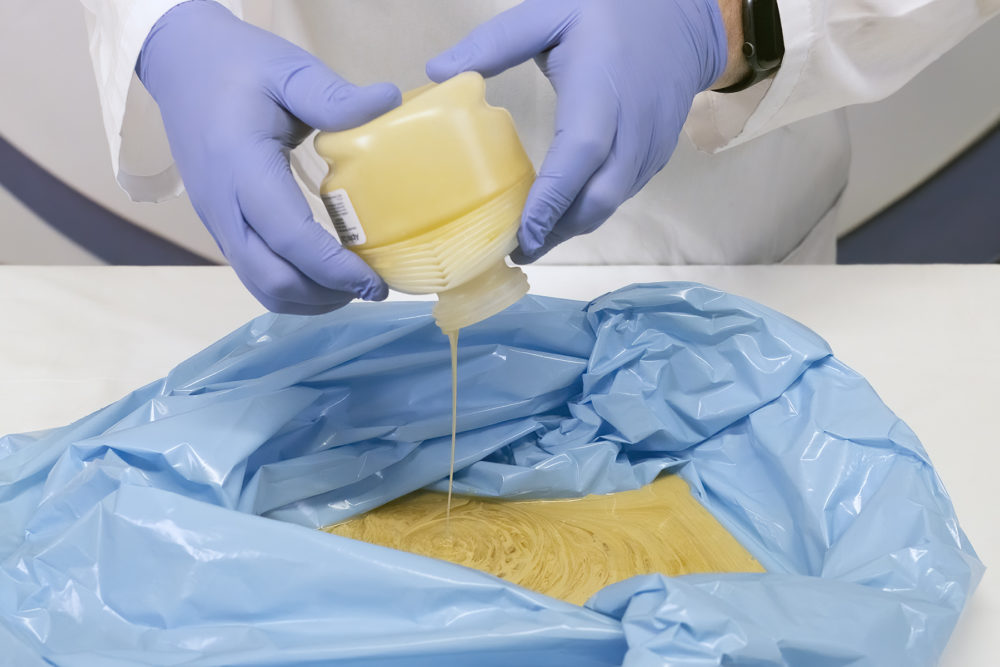- When the foam is poured into the bag, the bag must be placed on a piece of wood, styrofoam or cardboard, until the foam has risen a good solid inch or two. Then the bag can be transferred to your accessory device or treatment table. These act as insulators and keep the heat in the reaction. When the bag is placed on top of a tabletop couch, or other hard service that transfers heat, the heat is transferred out of the reaction and the foam doesn’t rise properly.
- If the foam isn’t mixed thoroughly it looks marbled; the bottle should look like one creamy color, and when the foam is poured out of the bottle it must be one solid mocha color, not marbled. If the foam is not mixed thoroughly, it creates hot spots. If you have large bubbles and small bubbles rising up, this indicates hot spots of foam and is not uniform in structure. The foam gets hotter and can smell very strong. See the picture of the bottle of foam I shook and poured at our warehouse. The bubbles in mine are almost all exact in size and proportion.
- When cells look large and small it can also be an indication that the wrong size of papi was used with the polyol. When stored together, it can be easy to grab a papi and polyol not meant to be used together. When this happens you get a very strong smelling foam, crappy foam that usually falls apart in a week or less, and the bag tends to fill with air gaps as the foam rises.
- The past 2 months have shown extremes in temperatures. It is “possible” the foam may have been damaged by extreme cold or hot temps in shipping. Here’s one way to tell. Open bottles marked #1 and look inside. If the papi compound has crystallized, the foam is ruined. It will look like sand all over the inside neck of the bottle, and the papi may come out in clumps when poured in to the polyol. If you’re still not sure if they were damaged, you can return a sample to us and we will run our QC test on the sample and get back to you ASAP.
Again, it is imperative the bag is placed on a piece of styrofoam, wood, or cardboard when mixing the foam. After pouring the foam into the bag, collapse the bottle to get out all of the foam. If the collapsed bottle fills with foam after you’ve poured it all out, it is an indication you’re waiting too long before pouring the foam out of the bottle. (We’ve gone to a lot of trouble and expense to provide collapsible bottles so the amount of hang up that’s wasted should be very minimal in the AC250 and AC325. Shake time is TEN TIMED SECONDS.)
As soon as the foam is poured into the bag, wait until the foam begins to rise before getting rid of the air and folding the bag. That way, there is enough oxygen in the reaction to blow the foam 30-40 times its original volume. Little pockets of air left in the bag can grow 4-5 times its size.
